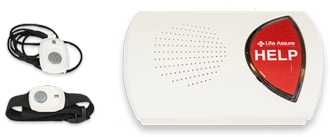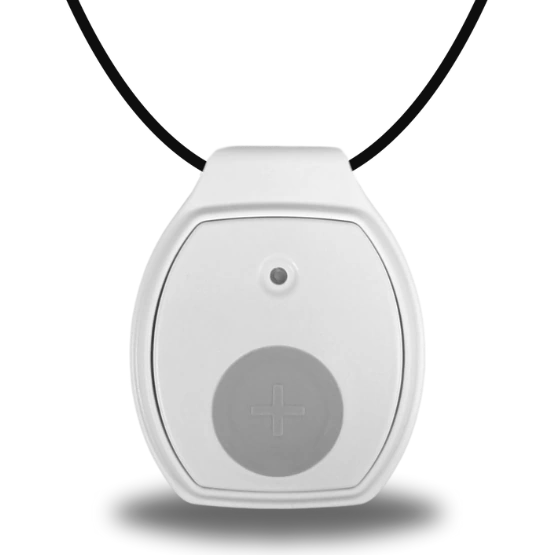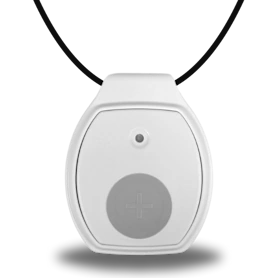Walker for Seniors: Safety Tips and Proper Usage for Maximum Support
Do you know that mobility devices, like walkers, are highly popular among Canadian adults over 65? They help you stay steady, move with ease, and prevent dangerous falls.
So, if your strength or endurance drops, a doctor may suggest a walker. Use it to rest one leg or when balance feels shaky. But the wrong use of walkers can cause the very accidents you fear.
So, choose the right walker size, learn safe steps to use it, and maintain it regularly. Today, we’ll give you simple tips for safer walking and steady support with a walker.
Life Assure Product Quiz
Find The Perfect Medical Alert Device
Take our 30 second quiz and discover
which Life Assure medical alert device
is the right fit for you or a loved one.
Life Assure Product Quiz
Find The Perfect Medical Alert Device
Take our 30 second quiz and discover
which Life Assure medical alert device
is the right fit for you or a loved one.
Tips to Choose the Right Walker for Aged Adults
Choose the walker for seniors that suits your body, home, and everyday routes. Here are some effective tips to do so.
Match the Walker Type to Your Mobility Needs
Start by naming your goals, like grocery trips, clinic visits, or hallway walks. If balance feels shaky, a standard walker gives very steady, step-by-step support. If stamina is good, the two front wheels reduce lifting and save energy.
Rollators add four wheels, hand brakes, and a seat for short rests. They work well for longer sidewalks, community centers, and long clinic corridors.
However, rollators move quickly, so strong brakes and control really matter. For tight condo halls, a narrow frame turns corners without bumping photos or railings. For uneven sidewalks, bigger wheels handle cracks, salt grit, and light spring slush.
Ask your physiotherapist which style matches your strength, reflexes, and walking surfaces. A short in-clinic trial helps you feel the right pace and control.
Measure the Fit: Handle at Wrist Crease, Elbows Slightly Bent
Stand tall in your usual shoes, then let your arms rest at your sides. Set the handle height level with your wrist crease for natural reach and comfort. You should keep your elbows bent about fifteen to twenty-five degrees while holding.
This angle reduces shoulder strain and keeps your steps smooth and close. Your hands guide the frame; they should not lift or carry your weight.
Recheck height when you switch to winter boots, because thicker soles change reach. If wrists ache, raise the handles a notch and test again slowly.
If your back rounds, try lowering a notch to bring your shoulders down. Walk ten meters, turn, and note how your body feels afterward. Small handle changes often fix posture without extra gadgets or fancy add-ons.
Confirm Weight Capacity and Frame Width for Your Home
Look at the posted weight rating and choose a generous safety margin. Include winter layers, a small bag, and heavier clothing when you estimate. Extra capacity helps during curb bumps and small slips on frosty mornings.
It also protects the frame from fatigue over months of regular use. A solid margin keeps your Walker for Seniors support reliable through Canadian seasons.
Next, measure doorways, bathroom entries, and elevator doors in centimeters and inches. Many homes have narrow interior doors, so check clearance for hands and knuckles.
Test hallway turns where shoe racks or benches squeeze the path a little. Tape floor lines and practice turns before bringing the new walker home. This quick step prevents returns and reduces scuffs on painted drywall.
Evaluate Wheels, Brakes, and Seat Height for Safe Use
Spin each wheel and listen for rubbing, grinding, or side-to-side wobble. Larger wheels glide over driveway seams, sidewalk heaves, and light leftover snow.
Softer tires feel quieter indoors but wear faster on rough outdoor concrete. Harder tires last longer outside but can chatter on tile or wood. Pick the balance that matches your routes in your own neighbourhood.
Check brake reach while wearing the gloves you use in January. Loop brakes should lock firmly without shaking the frame or straining hands.
Push-down brakes may suit you if finger strength is limited or painful. If your walker includes a seat, confirm easy sit-to-stand without strain. Feet should plant flat, with knees near ninety degrees for comfort.
How Should Seniors Use Walkers Safely and Properly?
Build small, steady habits that keep you moving safely every single day.
Stand up by pushing from the chair—never pull on the walker
Scoot to the chair edge, plant both feet, and lean slightly forward. Place your hands on the chair arms and push through your legs to stand. Only reach for the walker handles after you feel fully upright. Pulling on the frame can tip it forward and roll it away. That quick slide is risky on tile, hardwood, or shiny clinic floors.
If you feel dizzy after standing, pause, breathe, and count to five. This short pause lets your blood pressure settle and your vision clear. Then take the handles gently and check your balance before stepping. Practice the push-up motion five times daily until it feels automatic. Strong repetition builds safety when you are tired.
Keep upright posture; elbows slightly bent (15–25°), feet inside the frame
Stand tall like a string lifts your crown, but keep your chin soft. Relax your shoulders, bend your elbows slightly, and hold the handles lightly. This stance lets your legs work while your hands simply guide.
Keep both feet inside the walker’s rectangle to maintain a stable base. Reaching outside the frame can drag it forward at the worst time.
If your back rounds, lower the handles one hole and test slowly. If wrists complain, raise them one hole and walk ten meters.
Check breathing too, because good posture leaves room for easy air. Film a short hallway walk on your phone and review posture later. Tiny changes add up to smoother steps and less end-of-day soreness.
Use the sequence: walker first, weaker leg next, stronger leg last
Move the walker a small step forward, about an arm’s length only. Step with your weaker leg next, keeping weight light and centered. Bring the stronger leg forward to finish, then repeat the pattern.
Do not use the walker on stairs; hold the rail instead, always. For curbs, choose curb cuts when possible and take your time. If there is no curb cut, ask for help rather than risk it. Wet or sloped curbs in winter deserve extra attention and patience.
Check your path and keep all feet/wheels grounded before stepping
Scan two steps ahead for rugs, cords, water, and small floor changes. Tap each walker foot or wheel to confirm full contact with the ground. Grounded points stop surprise slides when you shift weight forward.
Keep bags light and centered so the frame does not twist sideways. Use baskets or pouches instead of hanging groceries from one handle.
At doors, pull the walker close, open the latch, then reset your stance. Roll or lift the frame first, and step carefully behind. Practice this doorway routine at home until it becomes smooth.
For elevators, enter, turn gently, and let the doors fully clear the frame. These small habits remove rush and prevent those awkward, risky scrambles.
Look ahead instead of down to maintain balance and control
Pick a spot ahead, like the next doorway or that framed hallway photo. Let your eyes lead your body, and your feet will follow smoothly. Looking down too long bends your back and strains your neck.
Glance down briefly only when checking hazards or making tight turns. Then lift your gaze again to keep your posture tall and breathing easy.
Outdoors, scan for black ice, salt piles, and broken curb edges. In addition, watch for sidewalk gaps near tree roots after the spring thaw.
Shorten steps on tricky surfaces and keep your hands ready on the brakes. Slow is smooth in winter, and smooth is safe on ice. Good vision habits protect balance better than any single gadget.
Inspect tips, wheels, and brakes often; clean and replace worn parts
Pick a weekly check time, maybe Sunday evening after your favourite show. Look for cracked rubber tips, loose screws, and sticky brake cables. Spin each wheel; wobble or noise means it needs service soon.
Wipe salt and grit from the frame after snowy sidewalk walks. Clean gear works better and lasts longer through tough weather.
Replace worn tips and frayed cables before your next big outing. Keep a small repair kit with an Allen key and spare tips. Mark service dates on a calendar beside medical or vaccine reminders.
In addition, ask a local clinic or shop to inspect yearly. Regular care keeps your walker steady and supports for the long Canadian haul.
Conclusion
You finish strong when your walker fits and feels steady. You pick safe steps, then trust simple habits each day. You scan sidewalks, corners, and winter slush on Canadian streets.
You check brakes, tips, and wheels, and keep parts clean. You follow proper use, and your balance grows with confidence. You carry independence further with maximum support across Canadian seasons.











 Get Help With The Push Of
A Button
Get Help With The Push Of
A Button
















